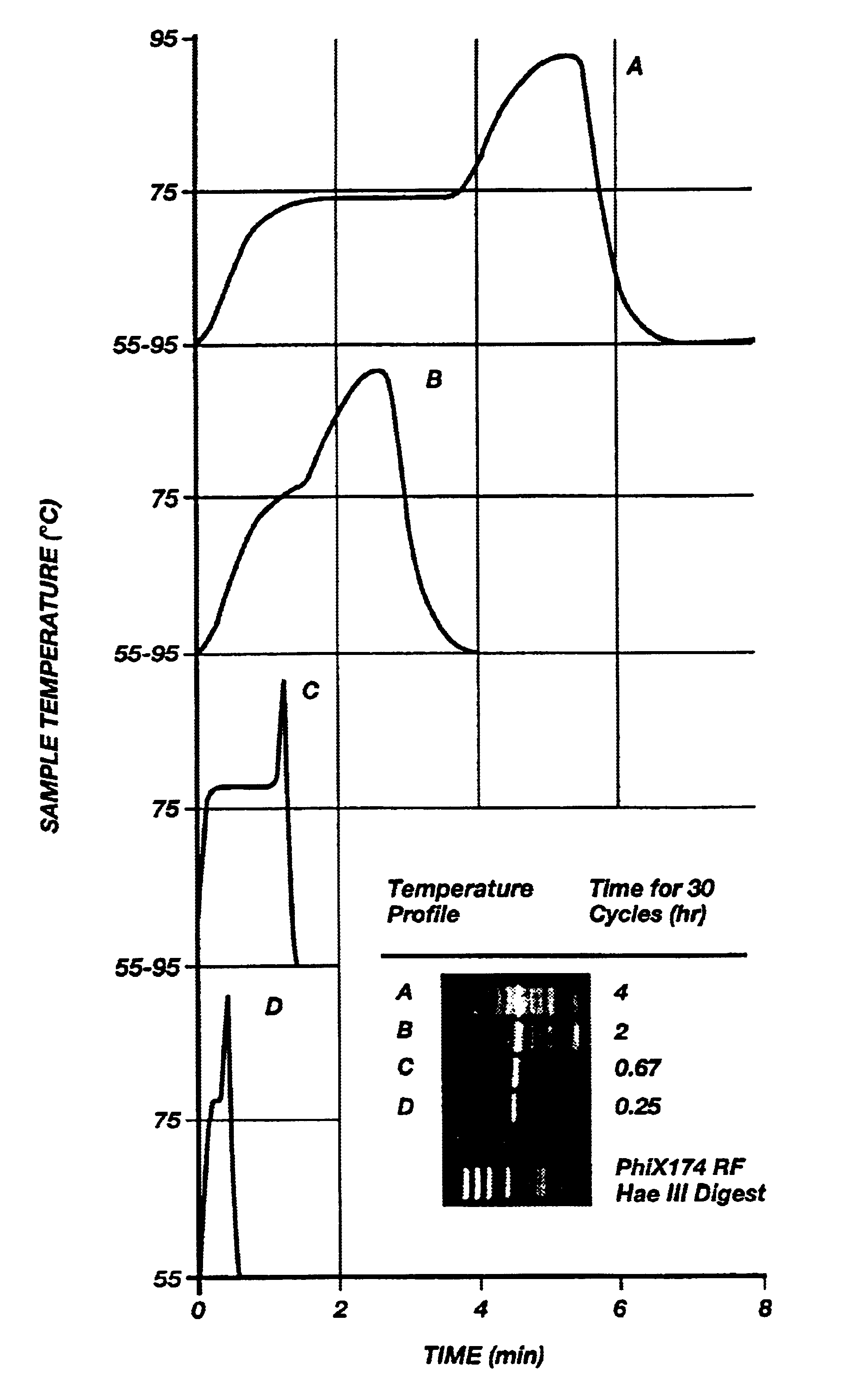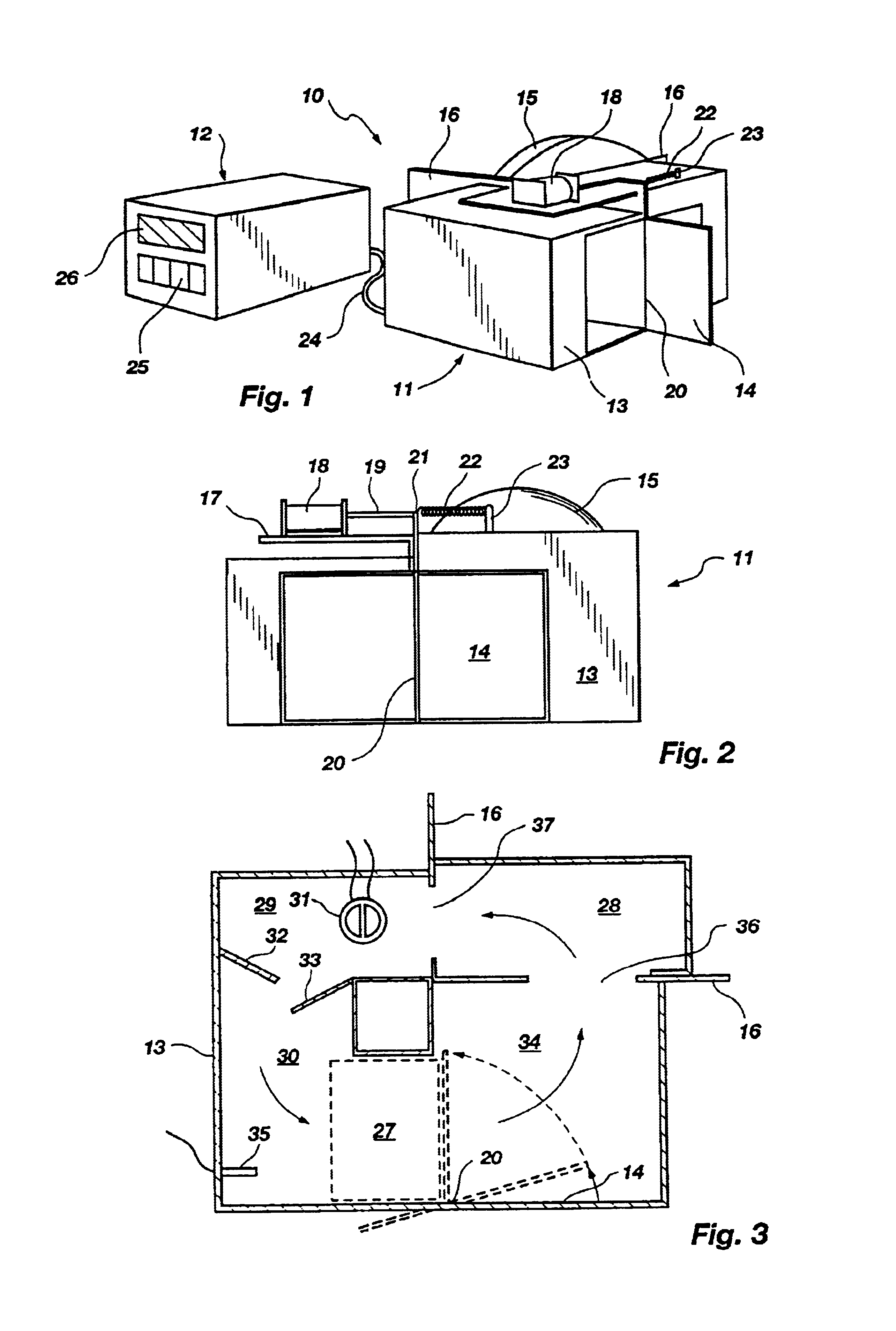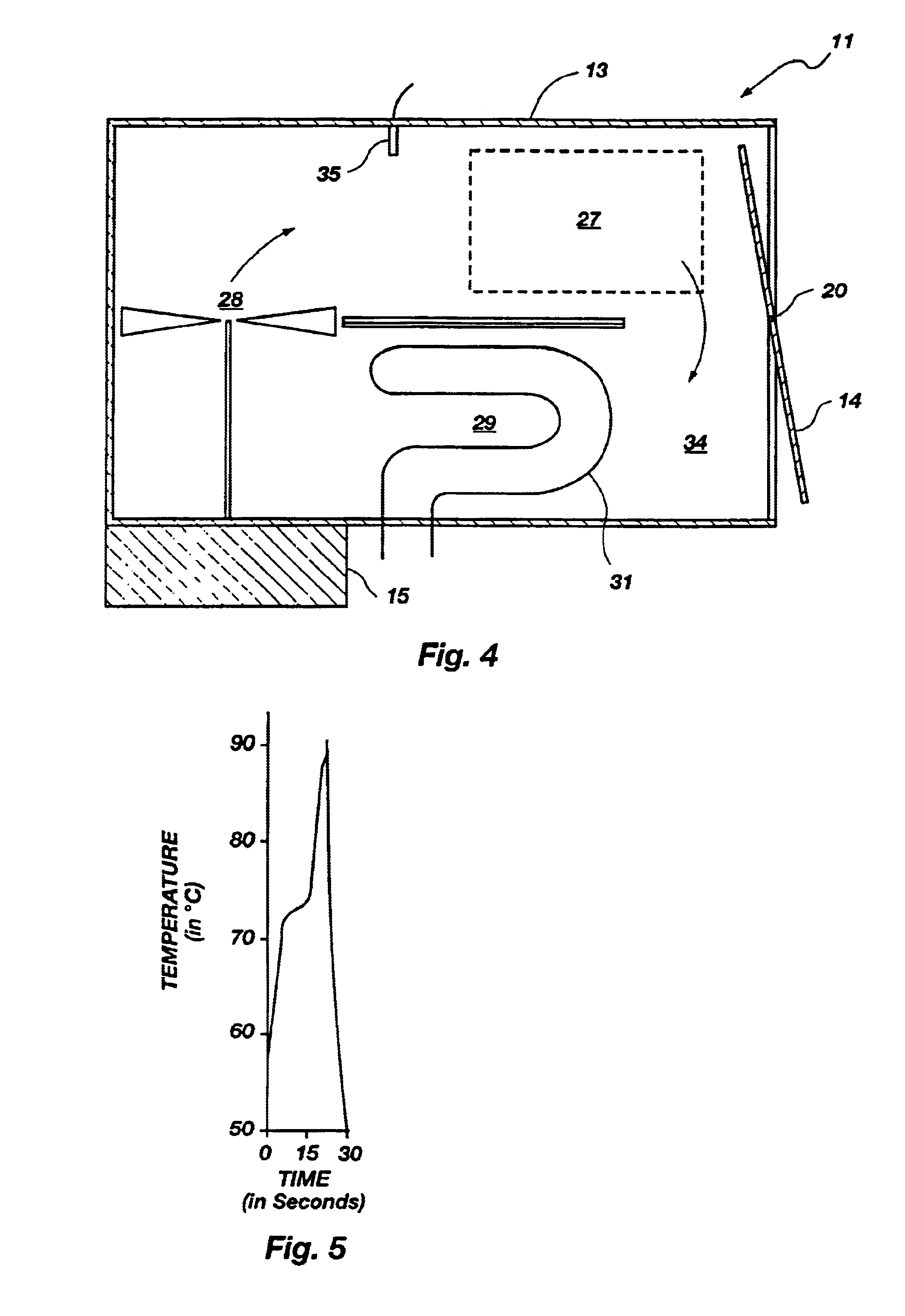Method for rapid thermal cycling of biological samples
a biological sample and temperature control technology, applied in the field of apparatus for rapid control of the temperature of liquid samples, can solve the problems of affecting the transfer of thermal energy, the disadvantages of microfuge tubes, and the use of heat block type devices as heat control systems, so as to reduce the overall thermal mass, shorten the temperature versus time profile, and increase the yield and specificity of polymerase chain reactions.
- Summary
- Abstract
- Description
- Claims
- Application Information
AI Technical Summary
Benefits of technology
Problems solved by technology
Method used
Image
Examples
embodiment 100
Shown in FIG. 8A is the general configuration of the housing 102 of the embodiment. The housing 102 rests on feet 104 (best seen in FIG. 8B) and functions to hold the other described structures in place and to isolate those structures which become hot from the surrounding environment. Included in FIG. 8A are input keys 25 and a display 26 as in the previously described apparatus 10. The previously described control structures can readily be modified or used as a pattern for a control means for use in the embodiment of FIGS. 8A-C.
As shown best in the cross sectional view of FIG. 8B, a sample chamber is designated by bracket 106. A lid 138 connected to the housing 102 by a hinge 131 can be opened to allow access to the sample chamber 106. The sample chamber 106 is preferably cylindrical in shape but can be of any shape or size required by the particular application.
The sample chamber 106 is lined with a black colored foam material 110 whose surface has light absorbing characteristics ...
example 2
FIG. 9A shows the results of four different temperature / time profiles (A-D) and their resultant amplification products after thirty cycles (A-D). The profiles A and B in FIG. 9A were obtained using a prior art heating block device using the prior art microfuge tube. As can be seen in FIG. 9A, the transitions between temperatures are slow and many nonspecific bands are present in profiles A and B. Profile B shows improvement in eliminating some of the nonspecific bands (in contrast to profile A) by limiting the time each sample remains at each temperature thus indicating that shorter times produce more desirable results.
Profiles C and D were obtained using the apparatus of FIGS. 8A-B. As can be seen in FIG. 9A, amplification is specific and, desirably, even though yield is maximal in C (60 second elongation) it is still entirely adequate in D (10 seconds elongation).
The optimal times and temperatures for the amplification of a 536 bp fragment of .beta.-globin from human genomic DNA w...
PUM
| Property | Measurement | Unit |
|---|---|---|
| time | aaaaa | aaaaa |
| time | aaaaa | aaaaa |
| time | aaaaa | aaaaa |
Abstract
Description
Claims
Application Information
 Login to View More
Login to View More - R&D
- Intellectual Property
- Life Sciences
- Materials
- Tech Scout
- Unparalleled Data Quality
- Higher Quality Content
- 60% Fewer Hallucinations
Browse by: Latest US Patents, China's latest patents, Technical Efficacy Thesaurus, Application Domain, Technology Topic, Popular Technical Reports.
© 2025 PatSnap. All rights reserved.Legal|Privacy policy|Modern Slavery Act Transparency Statement|Sitemap|About US| Contact US: help@patsnap.com



